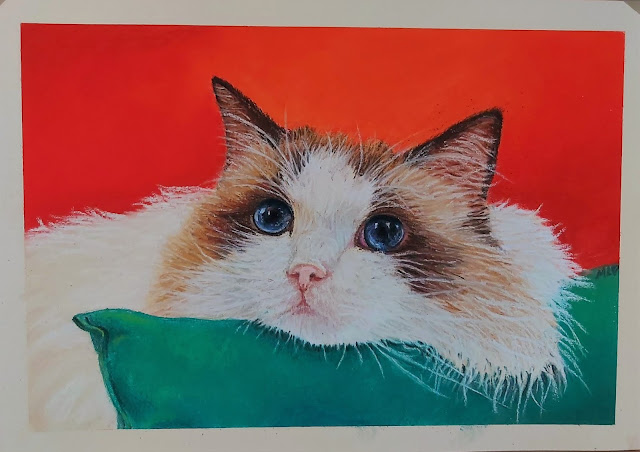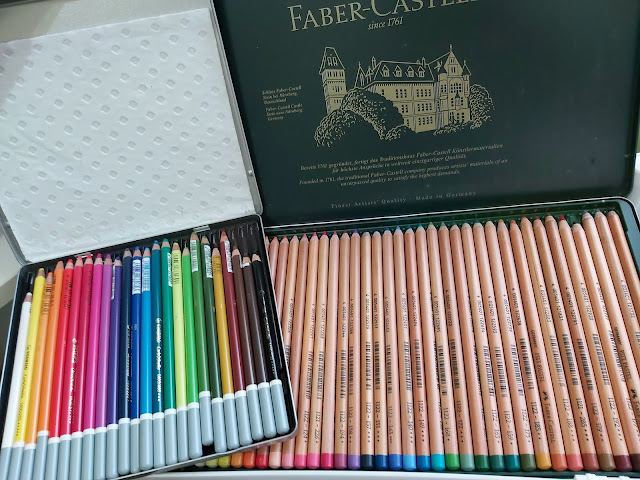How to take a good photo for pet portraits
My friend takes the most wonderful photos of his cats, and I couldn't resist drawing one of them.
I used Art Spectrum Colourfix Pastel Paper for this, it's a sanded paper.
This was my friend's photo which I referenced:
 |
| Photo: Yew Shan |
This is an example of a great photo and I wanted to take this opportunity to talk about photos for pet portraits. Sometimes, customers give me unsuitable photos and I have to turn them down. It's not that I'm being fussy - if the photo isn't good, there's a high chance the portrait won't be. The photo doesn't just serve as a "rough guide". I need to copy it closely and I can't make up details to make the drawing better than the photo, if that makes sense. Most pet portrait artists would rather turn down a commission if the photo is unsuitable, than risk turning out a bad portrait and making the customer unhappy.
So here's a checklist on what makes a good photo for pet portraits:
1) The photo has to be clear or at least the subject. For pets, it's important for the artist to see fine details like the direction of the fur. If the pet is not in focus or moving, and the fur is just a large fluffy ball of white or brown, I can't work with that because there's no definition. It's less important for the background to be in focus because I usually blur it out anyway, for an out-of-focus look.
2) The lighting shouldn't be too bright (eg. outdoors under bright sunlight) or too dark (in a dark shadowy corner). One of the most important parts of getting a realistic portrait is to have a good contrast between highlights and shadows, so if I can't distinguish between these, the portraits won't come out great. Also, the colour of your pet's fur will look different under different lighting conditions. I wouldn't know what's the true shade, so you'll need to make sure that the photo you send me accurately represents the colouring of your pet.
3) The subject should be at eye level, if possible. And that's the pet's eye level, not yours standing up! Many customers give me photos of their pets taken top down. This angle often distorts the proportion of the pet, making the head look a lot larger than the body. While this looks fine in photos (because your brain tells you it's a photo), it tends to look strange in portraits, like the artist got the proportions wrong.
4) Finally, choose a flattering photo of your pet! If you're going to immortalise your beloved furkid in a portrait, don't pick a photo where he or she is looking away or in a funny angle, or blocked by an object. Again, the portrait can only be as good as the photo, not better.
Hope that helps! With that, Christmas is approaching and it's never too early to think about gifts. Why not consider giving a pet portrait of your loved one's furkid? It's a thoughtful, one-of-a-kind gift and 80% of all proceeds go to charity so you'll be supporting a good cause at the same time, which is what the Christmas spirit is all about.
You can find out more about rates and how to commission a pet portrait here.





Comments
Post a Comment